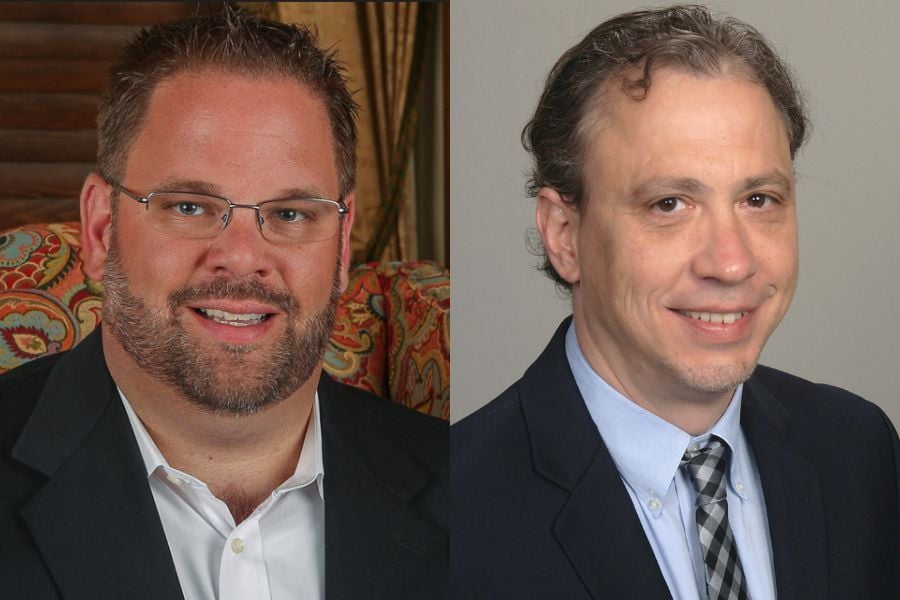

Advisors who bet on business development companies in 2023 turned out to be big winners. The question now is whether they should take some money off the table in case adverse economic forces weigh on these high-yielding investments.
BDCs blend attributes of publicly traded companies and closed-end funds, giving holders exposure to high-yielding, private equity-like investments. As a result of those higher yields, however, BDCs also tend to carry additional risk and can sell off quickly. BDCs primarily invest in the debt of small to midsize domestic companies, a strategy that has become all the rage of late as more advisors seek exposure to private credit.
That strategy paid off last year, with the S&P 500 BDC Total Return Index increasing by an impressive 27.6 percent, with about half of that return coming from capital appreciation.
Credit rating agency Fitch wrote in a report last November that it expects net investment income and dividend coverage for BDCs to remain relatively strong in 2024 despite “weakening asset-quality metrics and increased debt-service costs resulting from higher interest rates for borrowers.” And so far that has remained the case, with the S&P 500 BDC Total Return Index slightly higher year-to-date.
John Cole Scott, chief investment officer at Closed-End Fund Advisors, agrees with that generally positive outlook, saying BDCs' prospects and debt coverage remain strong.
“A lot of the BDCs leverage is fixed and a lot of its loans are variable,” said Scott. “The coverage right now for the average BDC for their dividend policy is almost 130 percent, so we expect less increases. There's a lot of coverage for increased cost of leverage or lower cost of loans if they trend lower.”
As for his top picks in the BDC space, Scott recommends CION Investment Corp. (CION) and Trinity Capital (TRIN).
“CION is a direct-listed large BDC trading at about a 30 percent discount to its NAV, a 12 percent yield, and leverage around 54 percent. It’s basically still hurting from that direct listing and the generally wide discounts when that happens,” Scott said. “Trinity Capital is internally managed, trading at an 8 percent premium and 14 percent yield that's covered. It's a much different fund but they're both attractive uncovered gems in our opinion.”
Scott is also bullish on municipal bond closed-end funds, especially for those investors with high federal taxes to pay, saying the funds are poised to bounce back after a rough 2023, when they saw heightened selling and widening discounts toward year-end.
“We don't know the timing, but right now there is a great opportunity for the historic wide discounts to narrow,” he said, adding that concerns over the leverage found in many closed-end funds tend to be “more hype than reality.”
In terms of specific closed-end fund picks, Scott suggests the Pioneer Municipal High Income Opportunities Fund (MIO), which was yielding 5.4 percent at last check, and the abrdn National Municipal Income Fund (VFL), yielding 4.4 percent.
As to the potential effects of interest rate cuts on closed-end funds which some say are likely on tap for later this year, Rob Shaker, chief investment strategist for Shaker Financial Services, says bond closed-end funds should be able to effectively weather rate movements in either direction as a result of their unique structure.
“While many investors fear investing in bond funds in a rising-rate environment, the fixed capital structure of closed-end funds allows the funds the opportunity to hold through duration without incurring any unnecessary penalties due to short-term dislocations,” he said.
“And when rates fall, CEFs get a double benefit as the movements will not only benefit bond pricings and the fund's day-to-day net asset value, but will also reduce the fund's leverage expenses,” Shaker added.

"QuantumRisk, by design, recognizes that these so-called “impossible” events actually happen, and it accounts for them in a way that advisors can see and plan for," Dr. Ron Piccinini told InvestmentNews.

Advisors who invest time and energy on vital projects for their practice could still be missing growth opportunities – unless they get serious about client-facing activities.

The policy research institution calculates thousands in tax cuts for Washington, Wyoming, and Massachusetts residents on average, with milder reductions for those dwelling in wealth hotspots.

Yieldstreet real estate funds turned out to be far riskier than some clients believed them to be, according to CNBC.

The race to 100 transactions ended a month early this year, with April standing out as the most active month on record for RIA dealmaking.
Orion's Tom Wilson on delivering coordinated, high-touch service in a world where returns alone no longer set you apart.
Barely a decade old, registered index-linked annuities have quickly surged in popularity, thanks to their unique blend of protection and growth potential—an appealing option for investors looking to chart a steadier course through today's choppy market waters, says Myles Lambert, Brighthouse Financial.
